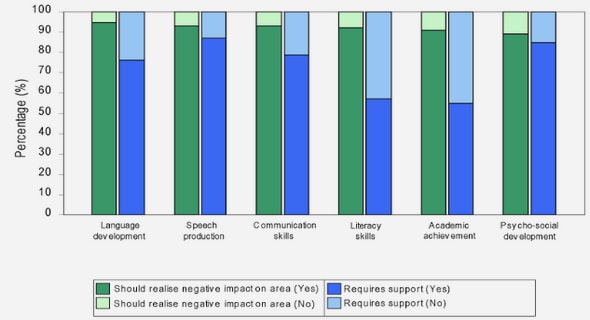(Downloads - 0)
For more info about our services contact : help@bestpfe.com
Table of contents
1 Overall Introduction
2 Chapter: State of the art
2.1 Childhood obesity: prevalence, determinants and possible leverages
2.1.1 Determinants and consequences of childhood obesity
2.1.2 High sugar and fat intake as an underlying dietary risk factor for childhood obesity
2.1.3 Which product categories are responsible for a high energy intake from sugar and fat among children from European regions?
2.1.4 Overview of possible leverages to tackle childhood obesity
2.2 Sweet biscuits (cookies) as the target for reformulation – the role of ingredients and common strategies for a sugar and fat reduction
2.2.1 Sugar ingredient
2.2.1.1 Role of sugar on structure, texture and sweetness in biscuit
2.2.1.2 Sugar reduction strategy
2.2.2 Fat ingredient
2.2.2.1 Role of fat in structure and texture in biscuits
2.2.2.2 Fat reduction strategy
2.2.3 Flour ingredient
2.2.4 Ingredients in smaller quantities: eggs, baking powder, salt and aroma
2.2.5 Cookies processing
2.3 Barriers to food reformulation
2.3.1 Changes in physicochemical properties as possible barriers
2.3.2 Changes in sensory properties as possible barriers
2.3.3 Possible consequences on liking
2.3.3.1 Impact on liking
2.3.3.2 Impact on children behavior
2.4 Innovative food reformulation approaches as a leverage to reduce children’s obesogenic environment
2.4.1 Multimodal interactions
2.4.2 Oral processing impacts texture and structure of food
2.4.3 Modifying granulometry and properties of ingredients
2.4.4 Analyses and statistical tools necessary for a sensory-led multicriteria reformulation approach
2.4.4.1 Sensory and physicochemical characterization
2.4.4.2 Preference mapping: linking preferences of consumers with products properties
2.4.4.3 Experimental design, multicriteria modeling and optimization
2.5 Key points of the state of the art and outlook for the considered strategy for this PhD
3 Chapter : Context, Research Questions, Overall Strategy
3.1 Context and the European STOP project
3.2 Research questions
3.3 Overall strategy
4 Chapter results part: Research with commercial cookies
4.1 “How to Select a Representative Product Set From Market Inventory?” A Multicriteria Approach as a Base for Future Reformulation of Cookies.”
4.1.1 Introduction
4.1.2 Material and Methods
4.1.2.1 Cookie market analysis (Step 1)
4.1.2.2 Variables and criteria among the chocolate chip cookie database
4.1.2.3 Chocolate chip cookie characterization (step 2): sensory screening and physicochemical analysis
4.1.2.4 Subset selection (Step 3)
4.1.2.5 Statistical representativity check (step 4)
4.1.3 Data analysis
4.1.3.1 Cookie clustering (step 3)
4.1.3.2 Validation with multi-dimensional statistical analysis (step 4)
4.1.4 Results
4.1.4.1 Cookie varieties and compositional diversity among the entire cookie database with private and international labels
4.1.4.2 Nutrition, physicochemical and sensory diversity among the chocolate chip cookie database
4.1.4.3 The selected subset and its representativity
4.1.5 Discussion
4.1.6 Conclusion
4.2 ”Multicriteria analysis of a product category to identify reformulation possibilities: a case study using commercial chocolate chip cookies.”
4.2.1 Introduction
4.2.1.1 Trends, scatters, and outliers approach
4.2.1.2 Underlying principle
4.2.1.3 Identification of reformulation opportunities that maintain sensory attributes
4.2.2 Materials and Methods
4.2.2.1 Market inventory and cookie selection (Step 0)
4.2.2.2 Physicochemical analyses
4.2.2.3 Quantitative descriptive analysis
4.2.2.4 Multicriteria mapping
4.2.2.5 Statistical analysis
4.2.3 Results
4.2.3.1 Cookie physicochemical diversity
4.2.3.2 Cookie sensory diversity
4.2.3.3 Multicriteria mapping
4.2.3.4 Selection of promising reformulation possibilities
4.2.3.5 Reformulation effects on Rayner score, processing score, and calorie content
4.2.4 Discussion
4.2.5 Conclusion
4.3 ”Sensory preference patterns of French children aged 7-12 and their implications for the reformulation of commercial chocolate-chip cookies.”
4.3.1 Introduction
4.3.2 Material and Methods
4.3.2.1 Products
4.3.2.2 Composition, sensory and physicochemical variables from the chocolate-chip cookie subset
4.3.2.3 Participants
4.3.2.4 Questionnaire
4.3.2.5 Study design
4.3.2.6 Statistical analysis
4.3.3 Results
4.3.3.1 Sensory and physicochemical diversity for chocolate-chips cookies
4.3.3.2 Children liking scores of cookies
4.3.3.3 Liking patterns among children with different sociodemographic background and BMI groups
4.3.3.4 Drivers of liking
4.3.4 Discussion
4.3.5 Conclusion
5 Chapter results part: Research with reformulated cookies
5.1 “Sensory-led reformulation of chocolate chip cookies using multifactor optimization.”
5.1.1 Introduction
5.1.2 Material and Methods
5.1.2.1 Cookie formulation
5.1.2.2 Sensory and physicochemical characterization
5.1.2.3 Physicochemical characterization
5.1.3 Statistical analysis
5.1.3.1 Statistical analysis sensory and physicochemical data
5.1.3.2 Statistical analysis of the mixture design: modeling and optimization
5.1.4 Results
5.1.4.1 Sensory and physicochemical properties of the reformulated cookies
5.1.4.2 Sensory modeling and impact on nutritional indicators
5.1.4.3 Recipe optimization with the desirability function
5.1.5 Discussion
5.1.6 Conclusion
5.2 “Measuring the impact of the reformulated cookies on children (liking, hunger level) and adults (time in mouth).”
5.2.1 Materials and methods
5.2.1.1 Participants
5.2.1.2 Products
5.2.1.3 Contextualized test
5.2.1.4 Self-administered questionnaires
5.2.1.5 Food oral processing evaluation
5.2.1.6 Statistical analysis
5.2.2 Results
5.2.2.1 Childrens liking among formulated cookies
5.2.2.2 Childrens eaten behaviour among formulated cookies
5.2.2.3 Impact on satiation and satiety
5.2.2.4 Food oral processing: Time spend in mouth to swallow the cookies
5.2.3 Discussion
5.2.4 Conclusion
6 Overall discussion and perspectives
6.1 Short summary about the achieved results including methodology
6.1.1 Is it possible to develop a sensory led-strategy including multi-criteria approach to answer to the challenge of reformulation?
6.1.2 What is the impact of the reformulated cookies on composition, oral processing (time in mouth before swallowing), children’s liking and self-reported satiety?
6.2 Reflexive analysis of the used approach
6.3 Overall Conclusions



